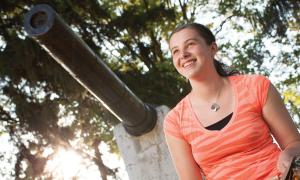article
4,317 Results
article
Seeing All Kids as Our Kids
I’m constantly struck by the memory of my first time in a jail. It was during a tour as a part of SPLC’s efforts to monitor the conditions of detention facilities. I recall being shocked at how young some of the people looked. When I stepped into the first cellblock, I muttered a prayer. In front of me stood rows and rows of black men. I was sick to my stomach; so many of them looked like they could be my cousins, uncles and other loved ones.
article
article
The School Year That Changed a Nation

The Little Rock Nine: An Interview with Minnijean Brown Trickey
article
Viewing Student Data Through an Intersectional Lens

Seeing students’ multiple identity layers and weaving them into the curriculum are both important ways to apply the concept of intersectionality in practice. Another key way to do this is to take a deep look at the
article
Making Invisible Histories Visible

This innovative program helps at-risk students stay in school and builds community, both in school and out.
text
Literature
An Angry Black Woman on the Subject of the Angry White Man
Jordan's poem takes on an sarcastic tone as she describes the duties, punishments, emotions and false promises endured by African Americans since slavery in response to Bill Clinton's description of affirmative action as "a psychologically difficult time for the so-called angry White man."
July 7, 2014
article
Crucial Conversations
Study circles help students talk constructively about race.
text
Informational
The burden of being a young American Muslim
Hailey Woldt describes being a part of a research team that traveled to 75 cities and visited 100 mosques as part of a study on Muslims living in a post-9/11 America. In Brooklyn, a ten-year-old boy tells of being beaten, prevented from practicing his religion in peace and called a terroist.
July 3, 2014
article

